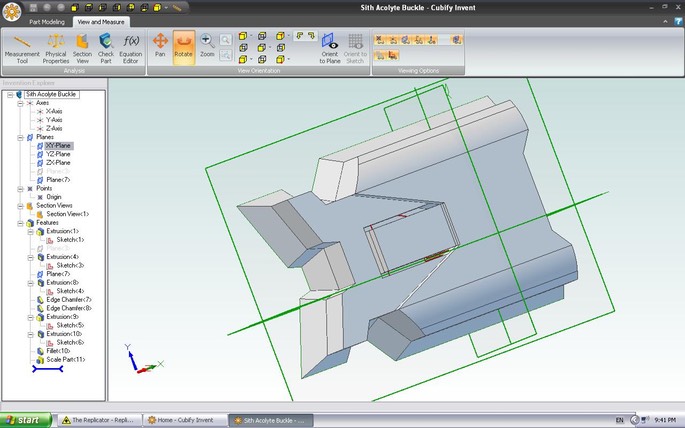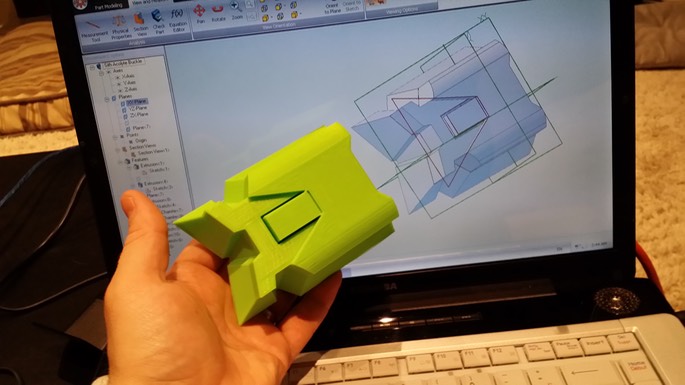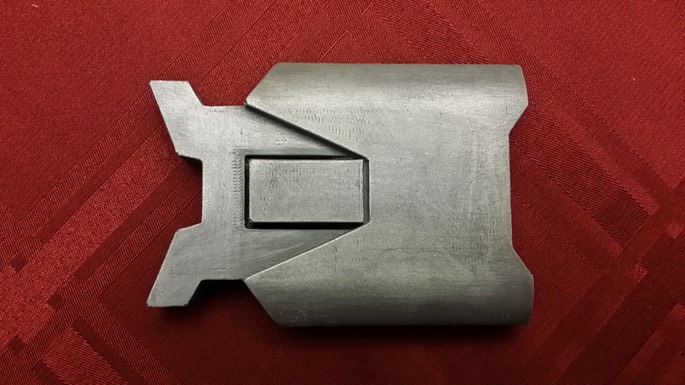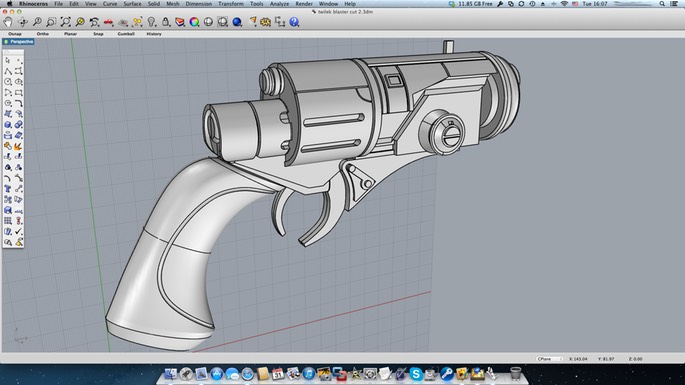Prior to buying my 3D printer, the advice I'd received from people was "don't bother getting a 3D printer until you learn 3D modelling."
In retrospect, I am happy to say that was bad advice I'm glad I never took!
I went ahead and purchased a printer, and right away committed myself to learning 3D modelling by starting with a program called Cubify Invent ($49), which I chose simply because it was mentioned in one of the 3D printer reviews on Amazon. Now, the thing with CAD software is that you can spend as much as $4,000 or as little as FREE, and it all really depends on what you need it to do, and the size of your wallet. As I was not looking to create the next Pixar masterpiece, nor design a Ford engine, I knew that software like Autodesk Maya or SolidWorks were not only out of my price range, but also complete overkill feature-wise.
So, I stuck to Cubify Invent, and following Cubify Fan's wonderful tutorials, I had my Sith Acolyte belt buckle modelled within hours!

Several days later, I was holding the 3D printed model in my hand,

...which was soon followed by the final cast (production notes here)!

However, I soon discovered that though easy to use for building simple objects, this software was a bit too limited for creating complex structures. So, I began looking for an alternative, downloading lots of demos from different vendors to find the perfect CAD software for me.
After some research and poking around, I downloaded a trial version of Rhino 5 for Windows, purchased a 1 month subscription to Digital Tutors, and began following a video course on how to build a toy car in Rhino. I would watch the videos, but instead of building a toy car, I would apply the demonstrated techniques to create Eleena Daru's blaster from Star Wars the Old Republic trailer "Deceived" (which has since become a project in its own right, the productions notes for which are found here). By lesson 9 (1hr 20 minutes into a 6 hour course) I had enough of an understanding of the program to stop following the lessons and continue modelling autonomously.
That is not to say that it only took an hour and twenty minutes to get proficient with CAD modelling! Far from it. To get through only an hour of video material took over a week of watching, pausing, rewinding, playing, etc., while at the same time trying to make sense of the demonstrated functions in Rhino.
I was ready to bite the bullet on a full version of Rhino for Windows ($995) when I learned from their sales department that Rhino was actually in Beta testing for MAC and is at this time was free to download and use!

This was AWESOME on so many levels! Not only would this save me $995 for the immediate future, but I am mostly a MAC guy these days. I could now leave my old Windows-based laptop dedicated to only running my old X-Wing series games and not clutter it up with other instals!
Another program I tried at around the same time as Rhino is the open source Blender, which is available for free here https://projects.blender.org.
Blender contains much of the functionality and features of its multi-thousand dollar counterparts, though I have not had much chance to see this for myself. From my initial exposure, I found Rhino a bit easier to understand, so I stuck with it.
* * * * * * *
- Computer Assisted Design (CAD) Software
